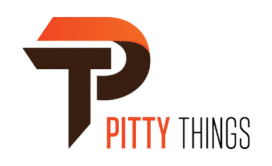Implementing a global labeling system in the pharmaceutical or medical device industry can be a complex process. Organizations must ensure that their labeling meets stringent regulatory requirements while maintaining operational efficiency. A well-executed labeling system not only improves compliance but also reduces the risk of costly errors and recalls. This step-by-step guide will help you navigate the key phases of a successful global labeling system implementation.
Understanding the Importance of a Global Labeling System
A global labeling system ensures that product labels are accurate, compliant, and consistent across all markets. It integrates regulatory guidelines, translation processes, and workflow management into a centralized system. With increasing global regulations and diverse market requirements, companies cannot rely on manual processes or disparate labeling systems. Investing in a comprehensive labeling system is critical for maintaining compliance, minimizing risk, and streamlining operations.
Step 1: Assess Your Current Labeling Process
Before implementing a new system, perform a thorough assessment of your existing labeling processes. Identify the challenges your organization faces, such as:
- Multiple systems causing inconsistencies
- Manual updates leading to human errors
- Delays in regulatory submissions
- Lack of version control
Understanding these gaps will help define the goals for your new labeling system and ensure that your team addresses the most critical issues first.
Step 2: Define Clear Objectives
Once the assessment is complete, establish clear objectives for your labeling system. Objectives should be specific, measurable, achievable, relevant, and time-bound (SMART). Common goals include:
- Reducing labeling errors by a specific percentage
- Shortening the label approval cycle
- Standardizing labels across all regions
- Ensuring real-time compliance with global regulations
Clear objectives serve as a roadmap for your implementation project and help measure success.
Step 3: Choose the Right Labeling Software
Selecting the right software is crucial for a successful implementation. Key considerations include:
- Regulatory compliance capabilities
- Integration with existing ERP and PLM systems
- Automation and workflow management
- Multi-language and regional support
- Audit trail and version control
Carefully evaluate vendors and request demonstrations to ensure the software meets your organization’s requirements.
Step 4: Plan the Implementation Process
A detailed implementation plan ensures a smooth transition. Key steps include:
- Mapping current processes and data flows
- Defining system configuration and workflow rules
- Creating a project timeline with milestones
- Assigning roles and responsibilities
- Planning for training and user adoption
A structured plan reduces risks and ensures that all stakeholders are aligned throughout the project.
Step 5: Clean and Standardize Data
Data quality is a critical component of a successful labeling system. Ensure that all product, regulatory, and translation data is accurate and consistent before migrating it to the new system. Standardizing data reduces errors and improves the efficiency of automated processes.
Step 6: Test the System Thoroughly
Before going live, conduct comprehensive testing to identify potential issues. Key testing phases include:
- Functional testing of workflows
- Regulatory compliance checks
- Integration testing with other systems
- User acceptance testing (UAT)
Testing ensures that the system operates as expected and that labels are compliant across all markets.
Step 7: Train Your Team
Even the best software will fail if users are not properly trained. Develop a training program tailored to different user roles, including regulatory, quality, and production teams. Provide hands-on training, documentation, and support resources to ensure smooth adoption.
Step 8: Go Live and Monitor
Once testing and training are complete, launch the system in a controlled manner. Monitor the system closely during the initial period to identify and resolve any issues. Establish key performance indicators (KPIs) to measure efficiency, compliance, and accuracy. Continuous monitoring helps refine processes and ensures long-term success.
Step 9: Continuous Improvement
A global labeling system is not a one-time project—it requires ongoing optimization. Regularly review workflows, audit compliance, and incorporate feedback from users. Continuous improvement ensures that your labeling system remains efficient, compliant, and adaptable to changing regulations.
Conclusion
Implementing a global labeling system is a complex but essential task for companies operating in highly regulated industries. By following these steps — assessing current processes, defining objectives, selecting the right software, planning, cleaning data, testing, conducting SCO RO Training, going live, and continuously improving — organizations can achieve a system that reduces risk, improves efficiency, and ensures regulatory compliance. A successful global labeling system implementation provides long-term benefits, helping companies maintain consistency across markets while keeping up with evolving global regulations. Taking a structured, step-by-step approach ensures that your organization maximizes the value of its labeling processes and minimizes the risk of errors or compliance issues.






